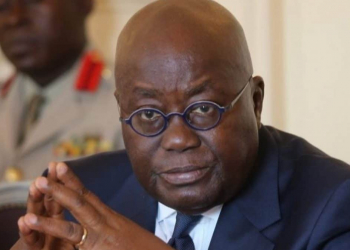Non-traditional export earnings from the handicraft sector grew by 23 percent in 2015; from US$3.47 million in 2014 to US$4.27 million in 2015.
Latest figures from the Ghana Export Promotion Authority (GEPA) show that the sector recorded the highest growth in the three sub-sector performance, ahead of agriculture and processed/semi processed items.
Products classified under handicraft category include, basketware, ceramic products, traditional musical instruments, hides and skins, batik/tye and dye, statuettes, beads, pottery, leatherwork painting, drawings and other forms of art and craft.
The handicraft sector remains one of the highest grossing non-traditional exports for many developing countries. The United States Agency for International Development (USAID) estimate that globally the handicraft industry has a market value of US$100 billion.
The industry plays a dominant role in the economic development of the rural masses by providing seasonal employment especially during the off-farming season.
Despite the growth recorded, the sector’s potential as a major source of foreign exchange, according to the Craft Dealers Association of Ghana, is still untapped.
“I don’t dispute the fact there is support in place, but it is better you don’t even access that support because it will take you years and you won’t even get the full complement of what you want. By the time you even get the support, it is no longer relevant because market conditions would have changed,” said Alhaji Tanko, Chairperson of the Association told the B&FT in Accra.
He added that: “If on our own, we generating over US$4 million dollars, then you can imagine what will happen if government gives us little support. We are convinced that if government can come to our aid, remove all these bureaucratic bottlenecks, it will help us to improve our earnings and ultimately contribute to the development of the country but in the absence of that we will just be marking time.”
To support the sector’s development, Mr. Tanko said government must create a fund purposely for handicraft production, just as it has done for the creative art sector. This, when done, he added, will see the sector’s contribution to the economy more than doubled.
In 2015 for instance, GEPA at its annual National Exporters Forum lamented that poor finishing and functionality still remains one of the sector’s challenges, causing prospective buyers to look elsewhere for better alternatives.
Consumers taste and preference for imported alternatives and the high cost of raw material are also some of the major challenges bedevilling the sector.
“The profit that we are supposed to earn is being taken away by other expenses. For instance, government must soften it taxes on the export of handicrafts because this sector can be a very strategic industry for the country. We understand that countries develop from the taxes that the individuals pay but government has to soften its taxes to grow the sector first,” Alhaji Tanko appealed.
Join GhanaStar.com to receive daily email alerts of breaking news in Ghana. GhanaStar.com is your source for all Ghana News. Get the latest Ghana news, breaking news, sports, politics, entertainment and more about Ghana, Africa and beyond.


